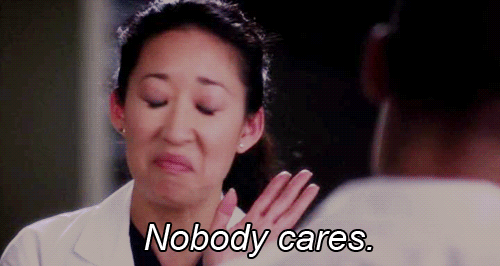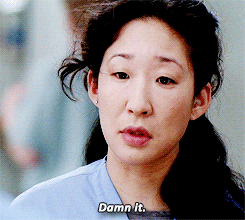This time last year I was preparing for a visit home for Christmas and to have some medical tests to determine whether or not I would need open-heart surgery later in the year. After a wonderful vacation spent with friends and family and meeting a new(ish) team of doctors, I returned home in January, rested and optimistic that the team at Nationwide Children’s Hospital would come up with a plan.
Luckily, I maintained the status quo health-wise and in October I returned to Columbus to undergo open-heart surgery. I would be in the hospital for at least two days and recuperate for three weeks before being released to fly back home.
I wish I could tell you some dramatic, edge of your seat, story about the trip, the surgery, and traveling home but I can’t because everything went perfectly. No, I’m serious, the doctors are extremely pleased with how things turned out. They told my husband, Brian, that “it couldn’t have gone better” and “everything went off without a hitch”. The only semi-surprising thing I encountered during my trip home, was receiving a referral for a sleep study.
Now for the Surgery Details
The nurses, doctors, and surgeons were wonderful, my surgeon hailed from Alaska (you guys, it is a SMALL WORLD) and we talked about where we live, the weather here, and the question that seems to be on everyone’s mind when we tell them where we live now, “What prompted you to move to Alaska?” A resident anesthesiologist, tried, unsuccessfully to give me an IV (in BOTH hands) when Brian decided to throw him out of my little curtained room. By the time he had gotten to hand number two, I was in tears because I swear, he was digging to China and my hands were the main route.
I received an upgraded pacemaker called a biventricular pacemaker (also called a cardiac rehab therapy device or CRT pacing device); a relatively new way to combat congestive heart failure. I say “relatively new” in that currently, CHD cardiologists do not have a lot of data showing how beneficial they are for patients with congenital heart disease. The data they do have available shows some promise but there’s not a lot of it available yet.
Instead of the dual pacing pacemaker, I had before (which was causing no problems or had no issues), my biventricular one has an extra lead. The purpose of that third lead is to help the heart beat in a more synchronized way. Normally, the lead would be placed through a vein in my heart but in order to do that, they’d have to remove some old leads. I’m sure one day when I die and an autopsy is performed they’re going to find all of my missing phone charging cables too.
Anyway, it’s a little too risky to remove the leads because they are at least 13 years old. Removing a lead requires trying to remove all the scar tissue that has formed around them inside my heart. Way too risky. Instead, the plan was made to attach the lead to the outside of my heart. My electrophysiologist and the surgeon worked together to map my heart’s electrical current in order to find the best place to attach the lead. Mapping my heart’s electrical current and attaching the lead included a full sternotomy.
As they were giving me the night night gas and starting all of the necessary IV meds, I made a few inappropriate jokes (as one does) and requested to have Steve Miller Band played. That’s all I remember until I woke up in CCU.
According to my husband, the surgery took about 5 hours including waiting to see me after it was over.
Let the Recovery Process Begin
I stayed in the hospital for a total of three nights and went back to my dad’s house on Sunday. I think recovery is always worse than surgery. It’s nothing to be knocked out and take a nice nap. That’s the best part. Waking up and feeling the first stabs of pain? That’s the worst.
I was sore… from my neck to my belly. I had a chest tube and my neck was sore from having a catheter inserted in my neck. I had been glued back together down the center of my chest and again over my left breast where the new pacemaker went. I was given a strong painkiller administered through an IV that I administered with the click of a button. If I didn’t push the button, the nurses did it for me.
My time in CCU is pretty muddy because I was pretty high most of the time. Ask my kids. I video chatted with them and used the pulse oximeter on my fingertip as ET’s finger and then again on my nose and told them I was Rudolph. Yes, I remember all of this. I regret none of it because it’s still funny.
What Grey’s Anatomy will Never Show You
If you aren’t in the medical field, then you may not know that during open-heart surgery, a roll, sometimes made up of blankets or foam, is placed between your shoulder blades while you’re lying on your back on the operating table. Doing this allows for better access to the sternum. In all the episodes of Grey’s Anatomy I’ve watched, the patient is never viewed from this angle. And what’s worse is afterward none of them complain of the INTENSE PAIN and stiffness in their shoulders post-surgery. The patients are either sitting up in bed, happy, laughing, and thanking Christina Yang or Maggie for saving their life, or dead.
Folks, I am here to tell you, we’ve all been lied to.

Sitting up is near impossible after open-heart surgery. Every muscle from your shoulders to your stomach feels like you’re stabbed every time you move. God forbid you need to cough, laugh, or strain to poop; it’s all painful and exhausting. There are no “comfortable” sitting or lying positions. If you by some chance, lie down flat, you might want to request a team of bodybuilders to help you get back to a sitting or standing position.
I had to sleep in an almost sitting position, and mostly on my back, clutching the heart-shaped pillow they gave me post-surgery as a brace for needing to sit up or cough. I’m a side sleeper but if I tried to lie on my right side, it felt like I was crushing my sternum. If I tried to lie on my left side, cue sternum and pacemaker crushing. I think all total I slept with nine pillows, not including my travel airplane pillow and the heart one from the hospital.
The “roll” I mentioned earlier left some pretty large knots between my shoulder blades and on the left side of my back. Part of recovery is going to include some physical therapy and massage therapy to get my range of motion back because my back is still messed up from the roll they placed under me.
Thanks Grey’s Anatomy for 16 1/2 seasons of lies.

By the time I flew back to Alaska, I was moving a bit faster, I was doing my laundry, and I had carefully found a way to sleep on one side that didn’t make me curse all the things.
Six Weeks Post Open-Heart Surgery
I’m happy to report that aside from a sinus infection and an awful cold that I caught less than a week after returning home to Alaska, things are good. The doctors warned that it would take a couple of months for me to feel as well as I did when I came for surgery. What they mean is I will likely feel worse before I start feeling better and they weren’t wrong. But I’m getting there and that’s all that matters to me.

Leave a Reply